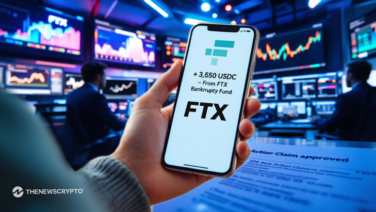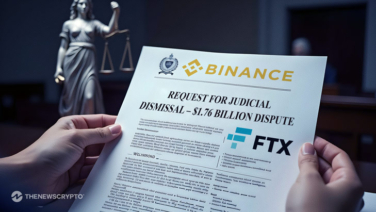The spectacular fall of FTX last year shook the crypto world to its core, destroying a good amount of the remaining trust that investors had in the top centralized exchange platforms. Trust in CEX platforms had already been eroded by similar collapses at Three Arrows Capital and Celsius, and the complete meltdown of the once vibrant and powerful Terra/Luna ecosystem. But with the demise of FTX, once touted as the world’s second biggest crypto exchange, trust in such platforms hit a new low.
FTX’s implosion last November saw thousands of investors lose access to billions of dollars worth of crypto that they held on its platform, within its custodial wallets. Ever since then, CEX platforms have been considered extremely high risk, and there has been a rush by crypto users to decentralized exchange platforms and self-custody of funds.
The lack of trust was made even worse by the alleged scale of criminality at FTX. It’s alleged that FTX founder Sam Bankman-Fried created a secret backdoor, through which his sister trading firm Alameda Research could borrow billions of dollars in customer’s funds. This capital was plunged into risky investments, and meant FTX had insufficient funds to repay users when everyone rushed to cash out.
Since then, we have even more reasons to be concerned. Binance proclaimed that it was publishing its “Proof of Reserves” audit, saying that this guarantees it has the funds on hand to repay all of its users. But it later transpired that its report didn’t paint a true picture of its financial status, and none of the big four accountancy firms would certify its claims.
Binance has since fallen into the crosshairs of the U.S. Securities and Exchange Commission, along with Coinbase, the biggest exchange platform in the U.S. Although the noise has since quietened down a little, questions remain over the safety of crypto investor’s funds held on CEXs.
Where Did The Trust Go?
One of the main reasons why CEXs struggle to win the trust of their users is their perceived lack of openness. Most CEX platforms are about as transparent as a concrete block wall that has been rendered and painted black. While many exchanges have published their own Proof-of-Reserves to demonstrate their finances are sound, fears persist about how reliable these audits really are.
Most crypto investors say these reports are not enough. In addition to full transparency, users also want to see CEX platforms implement the very best security features with risk management measures such as the segregation of user’s funds, hot and cold wallets, multi-sig wallets for withdrawal authorizations, and a zero-trust security foundation.
With all of the paranoia around CEXs, a number of useful third-party tools have appeared that can help users to understand how trustworthy or risky an exchange platform is. For instance, CoinGecko and CER both offer ranking systems for their users to compare different CEXs, and there are many others.
It’s believed that FTX’s downfall was caused by mismanagement, but other exchange collapses in the past were the result of poor security that led to them being hacked. The most infamous example of this was Mt.Gox, which was until 2013 the world’s leading crypto exchange. In late 2022 its platform was hacked and tokens worth $534 million at that time were stolen, leaving the exchange short. It couldn’t repay its customers, and when news of the hack surfaced a run on its wallets quickly put it out of business.
Experienced crypto users these days will store the bulk of their funds inside non-custodial wallets that they control. Of course, these wallets aren’t immune to hacking either, but the likelihood is much lower, especially if the user never advertises how many funds they hold.
Winning Back Trust
The good news is that some exchange platforms are doing their best to win back the industry’s trust. One of the most promising ones in that regard is actually a newly launched platform called MultiBank.io. If the name MultiBank sounds familiar, then you’re likely aware that it is one of the leading players in the financial derivatives industry. Its main trading platform caters to markets such as forex, stocks and shares, metals, indices and commodities.
Multibank.fx launched way back in 2005 and the company has slowly but surely built up a strong reputation for reliability and trust. It’s actually one of the most trusted platforms in the world, holding official licenses in 12 countries across five continents. It handles more than 90,000 traders per day from its one million-plus users, and averages a daily trading volume of greater than $8 billion.
With its venture into the crypto space, MultiBank.io is a uniquely attractive proposition with its extensive regulation, high leverage and its commitment to transparency and user safety. It’s paving the way for investors to trade crypto with confidence, with a strong adherence to the highest regulatory standards of the traditional financial world. MultiBank has an unblemished track record with regulators, and has never been fined for breaking any rules. The company is rightly proud of its history, and it seems unlikely to risk damaging its reputation with its foray into crypto.
There are a few crypto CEX incumbents that also continue to earn the trust of their customers. Though they are few and far between these days, there are a couple that stand out. One of the best ones is BitMEX, which sets itself apart with its exemplary transparency and security. Long before the FTX crash, BitMEX demonstrated its transparency when it published one of the earliest Proof-of-Reserves in 2021. It also publishes Proof-of-Liabilities data.
These audits enable BitMEX users to verify that it holds the funds to cover its client’s balances, and by publishing this information twice a week, it means customers always have access to data that is up to date and valid. BitMEX proves its solvency in a publicly verifiable way, and sets a standard that we’d like to see other CEXs follow.
Conclusion
The reality of centralized exchange platforms is that they’ll never be able to compete with decentralized platforms. The very nature of CEX platforms is that users are required to trust someone else to hold their funds, and no matter how good an organization’s reputation may be, they can never be as trustworthy as yourself.
That said, CEX platforms will continue to play an important role in the crypto industry for some time to come. But with the increased participation of TradFi players, such as MultiBank, and transparency trend setters, like BitMEX, there’s hope that the CEX industry can slowly regain the faith of the crypto community.







